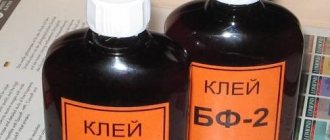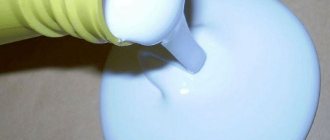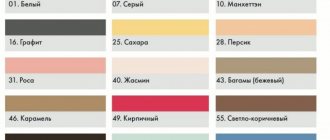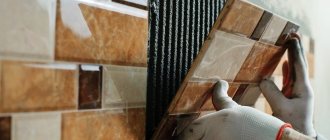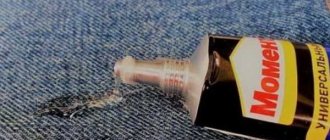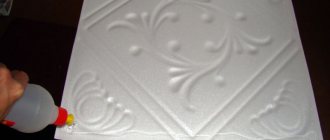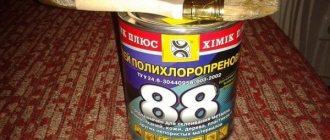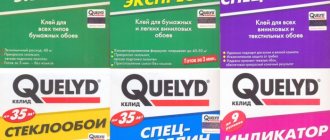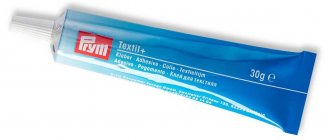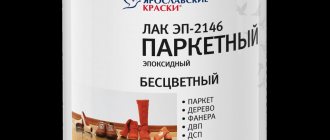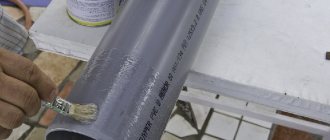For the manufacture of shoes, the use of traditional leather has long been outgrown, replacing it with numerous and complex polymers, which combine substances of both artificial and natural origin. One example of such a replacement is shoes and boots made of ethylene vinyl acetate.
Choosing glue for shoes
The attachment to such products is a special glue for EVA boots.
Preparing boots for repair and selecting accessories
Repair shops rarely accept rubber shoes for work. If there is a hole or cut, it is better to try to eliminate the problem at home. First you need to prepare the damaged item for repair - rinse it well to remove all dirt and dust, then dry it thoroughly. Immediately before sealing, the damaged area should be degreased with alcohol and vodka, although in most cases washing the product with detergents is sufficient.
Shoes made of PVC, EVA, and rubber should be dried naturally, away from heat sources. If you place boots on a hot radiator, there is a risk of deformation, damage to the appearance, and then restoration will be difficult. Drying and washing boots must be done carefully so as not to increase the area of damage.
To repair boots you will need the following materials and devices (in different cases the set will be different):
- fine grain sandpaper,
- protective gloves,
- high bonding adhesive,
- wipes to remove excess glue,
- piece of fabric
- patch made of waterproof material,
- construction, household hair dryer.
To repair EVA boots, there are ready-made repair kits on sale, although assembling them yourself is much cheaper than buying them.
Features of EVA material
If everything is clear with rubber boots, then repairing EVA shoes should be considered separately.
EVA or ethylene vinyl acetate is a homogeneous foam. In addition to shoes, it is used to make hoses, cable sheaths, car mats, toys, and handles for fishing rods.
Unlike traditional rubber, EVA shoes are lighter, but at the same time they are less durable. Punctures and cuts occur more often on it. Minor damage will heal on its own, but serious damage will require repair.
In humid weather or while on ice, a holey boot will begin to let water through, your feet will no longer remain dry and will begin to freeze, and the unique properties of the material will no longer work.
To repair shoes made of this material, you need to use special adhesives that are applicable only to this type of product.
Glue selection
To restore the integrity of their boots, some people, without hesitation, buy adhesives like “Momenta” and other universal compounds. In fact, many of them are not suitable for rubber and can even ruin the material. Superglues, despite their water resistance, have low elasticity, so when using boots, the adhesive seam will quickly collapse.
A worthwhile result can only be achieved with the help of special glue for rubber, PVC, EVA, which provides a reliable sealing effect. You can find such products in stores for fishermen and motorists. They eliminate the hole, protect the shoes in the future, and prevent the appearance of new defects in areas susceptible to them.
Desmokol and Nairit, containing artificial rubbers and urethane resins, are considered good adhesives for shoes. They are quite elastic, have high adhesion to most shoe materials, and are even suitable for repairing soles. Of the “Moments”, only “Moment Marathon” is suitable for work, which includes special additives and is capable of sealing any defects in rubber products. There is also “Liquid Patch” glue on sale, ideal for PVC: it eats into the structure of the material, tightly merging with it, forming a single whole. When using this glue there is no need to use patches.
How to seal EVA winter fishing boots? The best choice would be the glue of the same name (“EVA Shoe Glue”) in a white tube, its price is about 130 rubles. The product is useful for emergency repair of boots when fishing or hunting. Main characteristics of the composition:
- microporous structure of the adhesive joint after drying, which does not release heat even at sub-zero temperatures,
- water resistance, possibility of direct contact with moisture,
- easy to clean, not susceptible to clogging with dirt,
- yellowish color, which disappears after drying (the seam will be transparent and invisible),
- no spreading, fairly thick texture,
- the ability to tightly glue punctures, tears, damage along folds, on the sides and corners,
- long service life,
- economical consumption.
The glue has a disadvantage - it cannot be used to repair PVC boots or other products made of polyvinyl chloride. It will also not be possible to attach a PVC patch to EVA using this glue; it will not stick.
Composition and distinctive features of EVA glue
The composition of EVA adhesive is a polymer composite based on foamed ethylene vinyl acetate.
When compared with other adhesive solutions, the following list of distinctive features of EVA can be identified:
- The polymer used in production is elastic and finely porous, which gives the finished product an orthopedic quality - a memory effect. When eliminating defects, the glue restores and preserves the original shape of the product.
- The solution is resistant to moisture, so the restored shoes can be worn in all weather conditions, and can also be used for fishing, when you often need to stand in the water.
- The polymer is wear-resistant, which eliminates the need for frequent repairs of products. In addition, the solution is impervious to chemically aggressive substances, including solvents and oils.
- EVA glue has a long shelf life, does not become moldy over time and does not promote the growth of bacteria.
- The substance is hypoallergenic, which expands the possibilities of its use in the field of repair of medical knitwear and footwear.
Along with a large number of positive aspects, EVA glue has a disadvantage, which is insufficient mechanical strength. The sealed area can be easily pierced or cut with a sharp object.
Rules for working with EVA
Only glue based on the same material will qualitatively repair products made from EVA (“foam”, foam rubber, as it is called), since it impregnates the porous structure and merges with it. A patch is not needed for small or medium-sized damage. It will be enough to apply glue and the crack will close. For large tears, it is better to purchase a new pair of boots. You need to wear gloves when working with glue. The product must not be used until the glue has completely dried.
The sequence of work is as follows:
- clean the puncture area with sandpaper so that it becomes rough (if a patch is used, clean it too; glue will not stick to a glossy surface),
- compress the area of damage to the product so that the edge of the puncture comes out, so the quality of the seam will be higher (it is better to do this with your hand immersed inside the boot),
- apply glue to the defect, join its edges or apply a patch coated with glue,
- It is better to glue serious tears with two patches - on the inside and outside,
- Place a piece of clean cloth on top of the defect area, place a weight,
- if there are two patches, first place a hard object inside the boot to press the first patch, then fix the glued outer element.
Most adhesives require curing for 24 hours - this is how long it takes for polymerization to occur and the product to be ready for use again.
How to seal PVC boots
Having chosen the appropriate glue, you can begin repairing PVC boots. The patch can be cut from ordinary rubber, and adhesives such as “Liquid Patch” are used without applying a patch at all. The defect site is treated with sandpaper to make it rough, degreased with acetone, and dried. Apply glue to the patch and base, wait a few minutes, and press a piece of rubber against the defect. If polyurethane glue is used, it is recommended to heat it with a hairdryer and only then apply the patch, so the gluing area will be more durable.
Sealing rubber boots
To repair ordinary rubber boots, you can use one of the popular techniques.
Anglers method
Special rubber adhesives are sold in stores for fishermen. They are ideal for repairing rubber products, including those in contact with water. Exact instructions are always included with the glue and must be strictly followed. Usually, the surface must first be carefully sanded, then degreased with acetone. A patch is glued only if there is a large defect, and small cracks are filled with glue without a patch. The drying time must be observed without shortening, otherwise the adhesive joint will not be able to gain the necessary strength.
Cyclists method
Bicycle enthusiasts often have a special repair kit available, which includes glue, a patch, a brush for applying the product, and sandpaper. These devices are suitable not only for repairing a broken bicycle tube, but also for sealing torn boots. The technology will be similar:
- sanding,
- degreasing with acetone,
- cutting the patch according to the size of the defect (plus 1 cm allowance on each side),
- uniform application of glue to the surface and patch,
- applying a patch,
- fixation,
- wait until the glue dries.
Some adhesives allow you to use products after just a couple of hours. Although, to improve the quality of adhesion, it is better to wait a day, so the adhesive seam will be stronger and more durable.
Automotive method
Sometimes shoes, boots made of rubber or EVA crack at the bends. In such a prominent place, the patch will not look aesthetically pleasing and will ruin the appearance of the shoes. For a more accurate repair, you should purchase an automotive adhesive-sealant, polyurethane or epoxy compound and apply it without applying a patch. The easiest way is to buy a transparent composition; it will not be noticeable on the product at all. The “Crazy Hands” car glue from Done Deal, which is sold in any auto store, has proven itself to be excellent. It firmly holds the gluing area, protects the shoes from moisture getting inside, and due to its elasticity it does not collapse when the material is further bent.
Hot method
To perform hot gluing, you will need a vulcanizer and a piece of raw rubber. Despite the complexity, the quality of the repair will be at a high level, the patch will stick tightly. Raw rubber is soaked in gasoline for 10 minutes, laid on the defect, and pressed with a vulcanizer press. The device is turned on for half an hour, then turned off. After complete cooling, the press is removed and the product will be ready for use.
Features of gluing soles
The most difficult repairs will occur if the sole is damaged. Of course, you can simply repair a crack, a puncture, or fill it with glue, but the quality of the bond will be low, as will the durability. This “patch” is enough for 1-2 outings in wet weather. You can also carry out repairs in another way:
- take a piece of nylon,
- insert material into the crack,
- heat the soldering iron and solder the crack.
If you seal the defect in this way, the sole will last longer, but it is unlikely that you will be able to wear the boots for even one season. It is better to pre-treat the puncture on a sharpening machine to make the area smoother. Afterwards, you need to degrease the sole, fill the hole with epoxy glue from the outside and inside. After a day, an insole should be placed inside the boot, and the shoes can be used.
In order for repaired boots to serve for a long time, it is important to properly care for them in the future. Shoes should be washed and dried after returning from the street, and periodically treated with a water-glycerin solution. Drying should be done away from the radiator so that the boots do not become deformed. It is better to store them out of season in the box in which they were sold, stuffed with newspapers - this way the pair will retain their shape and attractive appearance.
SAR can help you
Experts believe that to glue EVA mats you will need a one-component SAR adhesive composition consisting of the following components:
- polychloroprene rubber;
- alkylphenol-formaldehyde resins;
- modifier;
- vulcanizer;
- ethyl acetate;
- gasoline solvent.
This way you can glue not only two pieces of EVA, but also glue leather, rubber, metal, plastic, PVC to the mat.
After applying glue, the seam will turn yellow or light brown. He is not afraid of frost, heat and can repel water.
